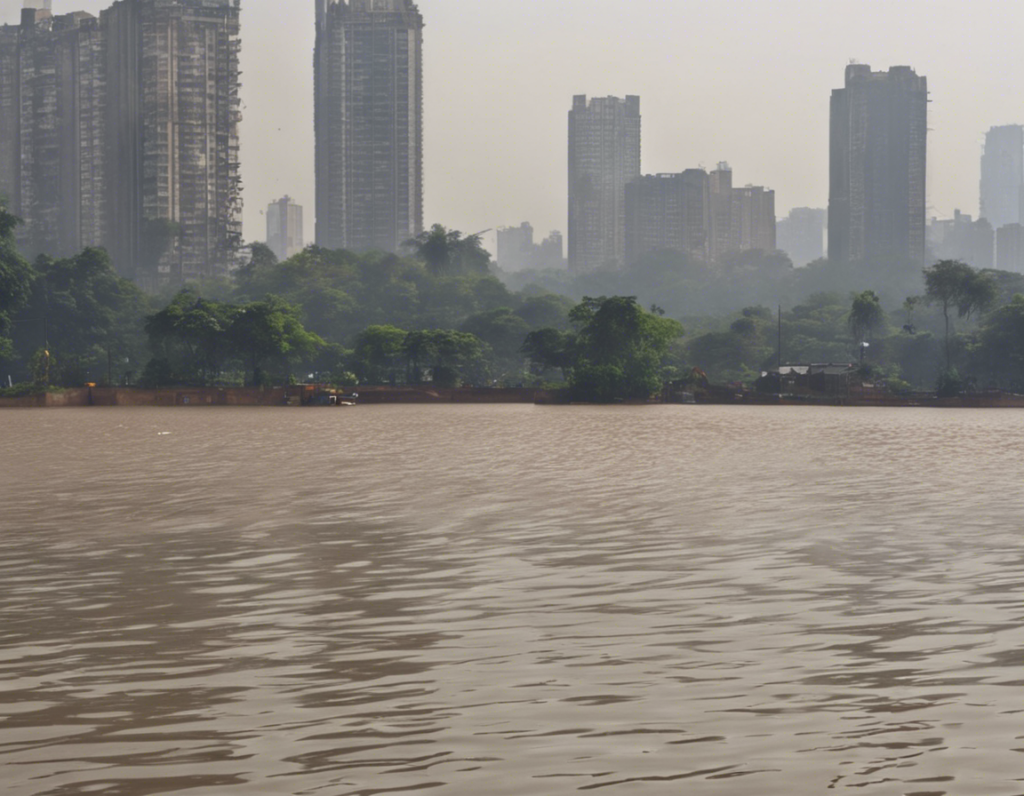As a city known for its heavy monsoon rains, Mumbai faces perennial challenges in managing its water resources effectively. One critical aspect of this management is monitoring the fluctuating lake levels in and around the city. The lakes in Mumbai play a crucial role in providing water supply, flood control, and maintaining the ecological balance of the region. In this article, we will delve into the importance of monitoring Mumbai’s lake levels, the methods employed to do so, the factors influencing these levels, and the implications for the city’s water management strategies.
Importance of Monitoring Lake Levels in Mumbai
Mumbai’s water supply heavily relies on its lakes, which serve as reservoirs for the city. The key lakes that supply water to Mumbai include Tulsi Lake, Vihar Lake, and Powai Lake. Monitoring these lakes’ water levels is crucial for ensuring an adequate and uninterrupted water supply to the city’s growing population. Additionally, monitoring lake levels is essential for flood control purposes, especially during the monsoon season when heavy rains can lead to overflowing lakes and subsequent flooding in low-lying areas.
Methods of Monitoring Lake Levels
-
Manual Observations: Historically, lake levels were monitored through manual observations using staff gauges installed at various points in the lake. This method involved direct visual inspection and recording of water levels at regular intervals.
-
Automated Monitoring Systems: With technological advancements, automated monitoring systems have become prevalent. These systems utilize various sensors such as ultrasonic sensors, pressure transducers, and radar sensors to continuously monitor water levels and transmit real-time data to control centers.
-
Satellite Remote Sensing: Satellite remote sensing techniques are also being increasingly used to monitor lake levels. Satellite data provides a broader spatial coverage, allowing for the monitoring of multiple lakes simultaneously and the analysis of long-term trends.
Factors Influencing Lake Levels
Several factors can influence the fluctuations in Mumbai’s lake levels:
-
Monsoon Rainfall: The primary factor affecting lake levels in Mumbai is the monsoon rainfall. Heavy rainfall during the monsoon season can lead to a rapid increase in water levels in the lakes.
-
Urbanization: Rapid urbanization and encroachment along the lake catchment areas can impact the natural flow of water into the lakes, affecting their levels.
-
Water Extraction: Excessive extraction of water for various purposes such as drinking water supply, irrigation, and industrial use can deplete lake levels, especially during dry seasons.
Implications for Water Management Strategies
Effective monitoring of Mumbai’s lake levels is essential for devising sustainable water management strategies. These strategies may include:
-
Water Conservation: Monitoring lake levels helps in determining the water availability for supply and can prompt authorities to promote water conservation measures among residents.
-
Flood Preparedness: Real-time monitoring of lake levels enables authorities to take proactive measures during heavy rainfall events to prevent flooding and mitigate its impact on the city.
-
Ecosystem Preservation: Maintaining optimal lake levels is crucial for preserving the ecological balance of the surrounding areas and supporting biodiversity.
Frequently Asked Questions (FAQs)
- How are Mumbai’s lake levels currently monitored?
-
Mumbai’s lake levels are monitored using a combination of manual observations, automated monitoring systems, and satellite remote sensing techniques.
-
Which are the main lakes that supply water to Mumbai?
-
The key lakes that supply water to Mumbai include Tulsi Lake, Vihar Lake, and Powai Lake.
-
What factors can lead to fluctuations in Mumbai’s lake levels?
-
Factors such as monsoon rainfall, urbanization, and water extraction can influence the fluctuations in Mumbai’s lake levels.
-
Why is monitoring lake levels important for Mumbai?
-
Monitoring lake levels is crucial for ensuring a steady water supply, flood control, and ecosystem preservation in Mumbai.
-
How do fluctuations in lake levels impact water management strategies in Mumbai?
- Fluctuations in lake levels influence water management strategies by prompting actions related to water conservation, flood preparedness, and ecosystem preservation.
In conclusion, monitoring Mumbai’s lake levels is integral to the sustainable management of the city’s water resources. By implementing advanced monitoring techniques and understanding the factors influencing lake levels, authorities can make informed decisions to ensure a reliable water supply, mitigate flooding risks, and promote the ecological well-being of the region.
